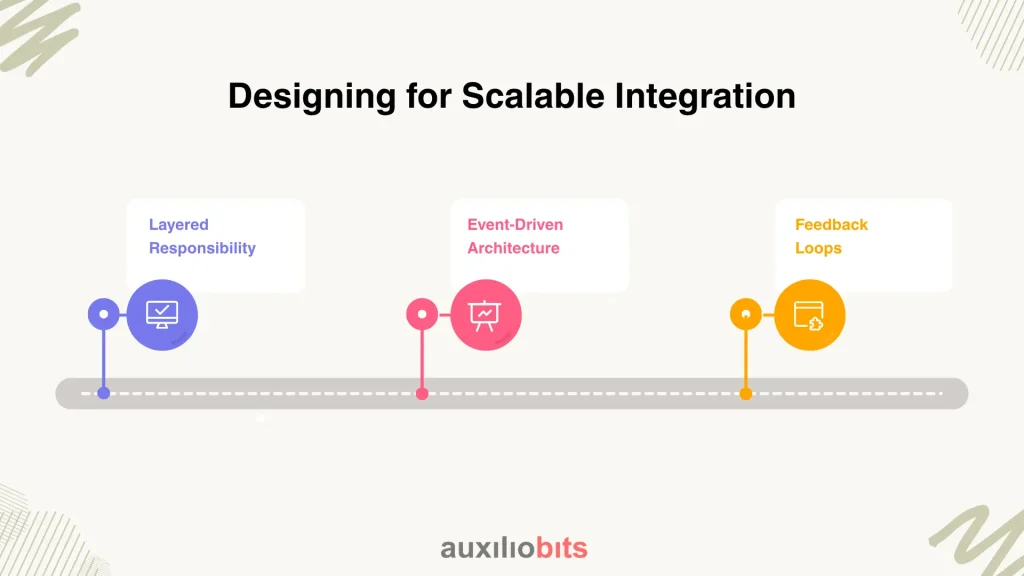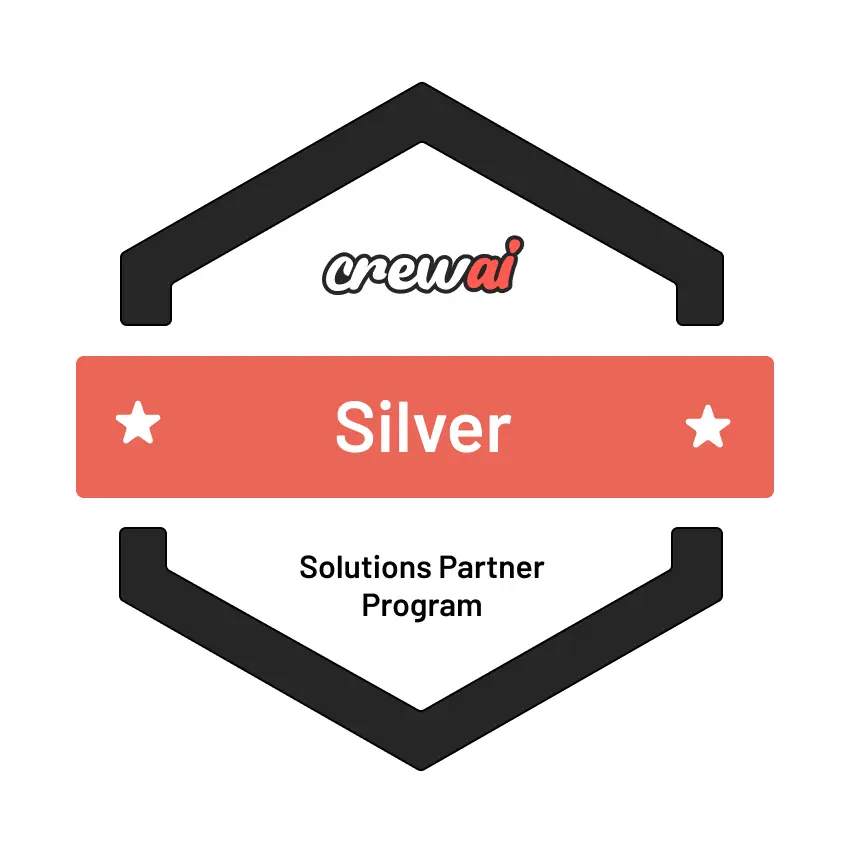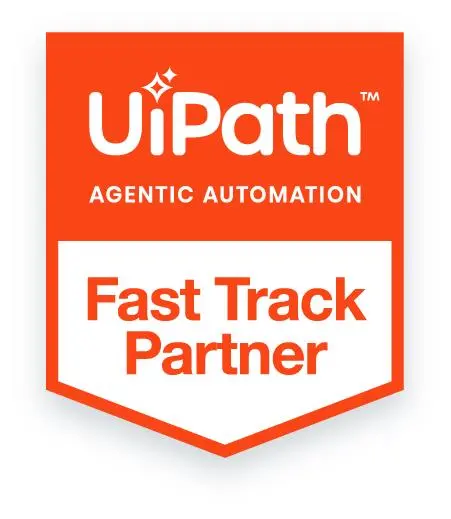
Key Takeaways
- Connectivity Alone Isn’t Intelligence – iPaaS ensures seamless system connectivity, but decision-making and prioritization require Agentic AI.
- Autonomous Agents Reduce Human Bottlenecks – Agentic AI can interpret context, learn from interactions, and handle exceptions dynamically, minimizing manual interventions.
- Hybrid Approach is Greater Than Sum of Parts – iPaaS handles orchestration; Agentic AI adds reasoning and adaptability, creating a scalable and responsive integration layer.
- Scalability Requires Architecture & Governance – Layered responsibility, event-driven workflows, and continuous feedback loops are essential for safe, scalable implementations.
- Early Wins Drive Long-Term Value – Start with high-impact workflows, define boundaries for autonomy, and iteratively improve agent policies to realize measurable efficiency gains.
Modern enterprises are no strangers to integration challenges. Systems multiply faster than they can be rationalized: a CRM here, an ERP there, an HR platform, finance tools, marketing automation, supply chain dashboards, and dozens of ad hoc applications spun up for specific projects. Integration platforms as a service (iPaaS) have helped to some extent, but there’s a limit to what orchestration and connectors alone can achieve when you’re dealing with complex, dynamic workflows.
Enter Agentic AI—autonomous, context-aware agents capable of not only executing tasks but also making decisions, prioritizing actions, and interacting across multiple systems. Combining these agents with iPaaS tools can transform integration from a static, rule-based chore into an adaptive, scalable process.
Also read: How Agentic Thinking Enables Composable Enterprise Architecture
Why Traditional iPaaS Alone Isn’t Enough
iPaaS solutions—such as MuleSoft, Dell Boomi, or Workato—are designed to connect applications through predefined workflows. They excel at:
- Standardizing data formats
- Triggering events across systems
- Enforcing predefined business rules
Yet, enterprises quickly run into friction. Consider this scenario: your finance system flags an invoice discrepancy, your procurement platform has a delayed approval, and your ERP shows a mismatch in inventory levels. A traditional iPaaS workflow would push alerts or route approvals, but it cannot prioritize actions, negotiate resolutions, or adapt on the fly. Humans still have to intervene.
Even sophisticated iPaaS features, such as low-code decisioning, depend on explicit rules. They break when the rules encounter edge cases—or when multiple systems have conflicting signals. This is where Agentic AI can fill the gap.
Agentic AI: What Makes It Different
Unlike conventional automation or RPA, Agentic AI isn’t just executing commands. It acts autonomously, interprets context, and can adjust its behavior. Key characteristics include:
- Autonomy: Agents can act without step-by-step human guidance. They interpret triggers and make decisions based on policy, priorities, and system state.
- Learning & Adaptation: Agents learn from past interactions, adjusting strategies to optimize outcomes.
- Context Awareness: Beyond raw data, agents understand system relationships, dependencies, and operational context.
- Negotiation & Collaboration: Multiple agents can interact to resolve conflicts, escalate issues intelligently, and coordinate multi-system workflows.
Think of it like having a virtual operations team that can navigate complex workflows, escalate exceptions when necessary, and even make trade-offs—like deciding which overdue invoice to process first based on risk, client importance, and cash flow.
Where iPaaS and Agentic AI Intersect
At first glance, Agentic AI and iPaaS might seem overlapping: both touch multiple systems. But the overlap is superficial. iPaaS provides connectivity and orchestration, while Agentic AI provides decisioning and autonomy. When integrated, they create a hybrid that is greater than the sum of its parts.
Practical Scenarios
- Sales and CRM Integration: An Agentic AI can monitor lead scoring and opportunity status across Salesforce, Marketo, and Zendesk. iPaaS handles the data sync and triggers, while the agent determines which leads to prioritize for outreach, when to send nudges, or when to alert a human for complex accounts.
- Finance and Procurement: iPaaS moves invoice data from an accounts payable system to ERP and alerts an approval workflow. The agent can detect discrepancies, suggest resolutions, or auto-negotiate terms with vendor portals, significantly reducing human bottlenecks.
- Supply Chain Coordination: Multiple agents can collaborate to optimize shipping, inventory, and fulfillment. iPaaS provides the real-time flow of information between WMS, TMS, and ERP, while agents decide when to reroute shipments, consolidate orders, or trigger replenishment proactively.
Designing for Scalable Integration
Successfully combining Agentic AI and iPaaS isn’t plug-and-play. There are architectural nuances to consider:

1. Layered Responsibility
- iPaaS Layer: Handles connectivity, event propagation, data normalization, and API orchestration.
- Agent Layer: Focuses on interpretation, decisioning, exception handling, and optimization.
- Monitoring & Governance Layer: Human oversight, auditing, and policy enforcement.
Without clear separation, systems risk either duplicating effort or leaving gaps where edge cases fail silently.
2. Event-Driven Architecture
Agents thrive on real-time context. An event-driven approach ensures that:
- System changes propagate immediately
- Agents can react dynamically rather than waiting for scheduled batch processes
- Bottlenecks are visible as soon as they occur.
For instance, a sudden spike in purchase orders that exceeds inventory triggers agent-led prioritization across multiple warehouses.
3. Feedback Loops
A crucial feature often overlooked in iPaaS designs is continuous feedback. Agents can:
- Monitor outcomes of automated actions
- Adjust future decision-making policies.
- Learn from human overrides to refine risk assessment and prioritization
Over time, this reduces the need for manual intervention.
Challenges in Integration
It’s not all smooth sailing. Enterprises frequently encounter pitfalls:
- Data Quality Issues: Agents rely on accurate data. If iPaaS pipelines carry inconsistencies, the agent’s decisions could be flawed.
- Conflict Resolution: Multiple agents can generate conflicting actions if rules aren’t well-defined. Coordination protocols are essential.
- Governance & Compliance: Autonomy can clash with regulatory requirements. You need clearly defined boundaries, audit logs, and exception handling.
- Scalability Constraints: Agentic AI can demand significant computational resources, especially in multi-agent, multi-system scenarios.
A real-world example: a logistics company tried agent-led routing for shipments across three continents. Initially, agents were making independent routing decisions, creating duplicated shipments and unnecessary costs. The issue wasn’t the AI—it was the lack of a centralized orchestration policy and feedback loop. Adding policy constraints and iPaaS-mediated coordination solved it.
Best Practices for Combining Agentic AI and iPaaS
From experience and industry observations, here’s what tends to work:
- Start Small, Scale Fast: Pick one workflow or domain where edge cases are frequent. Build agents to handle those, while iPaaS manages connectivity.
- Define Autonomy Boundaries: Not every decision should be left to AI. Specify what agents can resolve independently versus what requires human approval.
- Leverage Real-Time Observability: Dashboards, alerts, and logs allow humans to catch errors early and refine agent policies.
- Iterate Policies, Not Just Code: Agentic AI thrives on evolving rules and heuristics. Don’t lock decisions into static logic.
- Integrate Exception Handling Across Layers: iPaaS can route failed transactions, while agents can attempt intelligent recovery or escalation.
Case in Point: Financial Services
A mid-size bank faced a persistent challenge in reconciling transactions across multiple systems—core banking, fraud monitoring, payment processors, and compliance logs. Manual reconciliation was slow, error-prone, and expensive.
Approach:
- iPaaS handled ingestion from all systems, ensuring transactions were normalized and events triggered correctly.
- Agentic AI monitored these events, prioritized potential fraud cases, and reconciled simple mismatches autonomously.
- Escalation policies ensured high-risk or complex anomalies reached a human analyst.
Outcome:
- Reconciliation errors dropped by 65%
- Manual review time decreased by 40%
- Agents continuously improved handling over six months by learning from analyst interventions.
This is a prime example of where iPaaS provided scale and connectivity, while Agentic AI delivered intelligence and adaptability.
Why This Matters Now
Digital ecosystems are only getting more complex. Enterprises are adding specialized SaaS tools faster than IT departments can maintain governance. Traditional iPaaS workflows hit limits in agility and adaptability. By contrast:
- Agentic AI can actively interpret, reason, and act, reducing reliance on human intervention
- iPaaS ensures robust connectivity and flow, acting as a backbone for multi-system orchestration
Combined, they allow enterprises to scale integration efforts without multiplying human effort proportionally, a crucial factor in modern digital operations.
Potential Future Directions
We can anticipate several evolving patterns:
- Multi-Agent Coordination Frameworks: Protocols where agents negotiate in real time across systems, reducing the need for human arbitration.
- Contextual Workflow Optimization: Agents learn patterns in system behavior and preemptively adjust iPaaS orchestrations to prevent bottlenecks.
- Hybrid Governance Models: Policy-driven control loops that let agents operate autonomously within strict compliance guardrails.
Too much autonomy can feel risky, yet too little reduces the potential gains. Striking the right balance will likely define successful implementations over the next few years.
Final Thoughts
Pairing Agentic AI with iPaaS is not a theoretical exercise. Organizations experimenting today are already seeing reduced latency, fewer manual errors, and better adaptability in multi-system workflows. Yet, the integration is nuanced: connectivity alone isn’t intelligence, and intelligence alone can flounder without orchestrated pipelines.
The most successful deployments I’ve observed treat iPaaS as the nervous system and Agentic AI as the brain. Events flow smoothly, decisions are contextually informed, and exceptions escalate intelligently. It’s not magic; it’s engineering autonomy thoughtfully.
For enterprises struggling with growing complexity, this combination is more than convenience—it’s becoming a prerequisite for operational resilience and scalable digital transformation.








